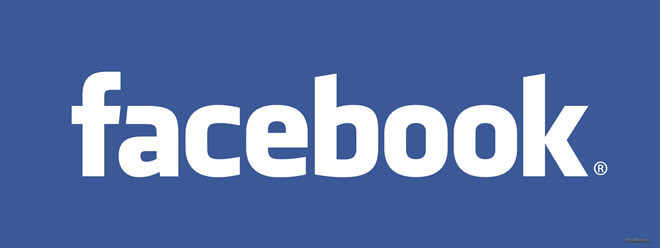Facebook is the New King – How to Advertise in Their Kingdom
If it seems some days that we focus a little heavily on Facebook when discussing things World Wide Web in the 2010’s, it’s not because we’re personally addicted to Bejeweled Blitz. We are, but that’s beside the point.
A recent study released by EMarketer officially tolled the bell. Facebook, with its half-billion users, is about to become king of the advertising world. The estimates are that Facebook will receive $2.2 billion dollars in advertising revenue this year, accounting for 17.7 percent (or better than 1 in 6) of all online advertising dollars spent. Former champion Yahoo! will account for 13.1 percent.
If you are attempting to procure advertising for your site or service, then these are numbers that you cannot ignore. It also means that you are going to be fighting against other advertisers for the attention of those half-billion users. If you are new to this game, you could use some pointers. Here are some of the best bits of advice we found from those who are experienced in this game:
Split your ad campaign and test the results
The marketing world is long familiar with the fact that the change of so much as a single word or image can alter the flow of traffic to your destination immensely. To see this in action yourself, split your ad campaign. Post at least 2 different ads simultaneously, with some slight change between them.
What should you change? Here are a few suggestions others have listed:
- Ad text – This one is obvious, and yet still undervalued. Change one adjective. Make one ad short and one long. Make one serious and one lighthearted.
- Image – There are entire schools of thought based on how different images elicit different emotional and instinctual responses (look up “Semiotics” if you are curious about this field). Switch it up and see what happens.
- Market targeting – Use Facebook’s different behind-the-scenes parameters to target different audiences. Facebook allows you to adjust your targeting by age, geographic location, education and interests, just for starters.
RELATED: Steps for Marketing an Ecommerce Business on Facebook
One important rule for all of the above: if you make any changes, make them one at a time. If you change multiple parameters all at once, and you see a difference in response rates, you’re not going to know for certain which ones were responsible for the differences you saw.
This leads us to the second major piece of advice:
Keep close tabs on your ad’s response rates
This is non-negotiable. If you want to know how well your ads are doing, you cannot just go on instinct or anecdotal evidence. You need to keep a close, scientific eye on their results. One page suggested that you would need to use third-party software to analyze the information, but from the reports we saw it seems like even the beginner user should be able to decipher it without too much assistance. Go to your ad’s “Report Manger” and download the information. You can easily upload it into a basic spreadsheet program from there.
The terms in your report are explained by Facebook, so we won’t waste space here repeating it all. What we will do instead is to remind you that you have several target goals that you are going to be looking at simultaneously. For your dollar you are going to have raw numbers of “Impressions”, “Clicks”, “Actions,” “Social Impressions,” and “Unique Impressions,” with corresponding proportions and percentages for each (“Click Through Rate” is Clicks divided by Impressions, for example).
RELATED: Facebook and Privacy: A Strain too Great?
You will need to decide which of these is how important to you on a per-dollar basis. If your goal is simply to generate higher name recognition, then “Impressions” is going to be more important for you. If you measure ad effectiveness by user participation, then “Actions” is going to be a greater target. Decide ahead of time which metrics matter the most to you, and focus on what most efficiently increases their values.
Some miscellaneous tips
In addition to these major ideas, there are some minor ones worth remembering:
- Work with Facebook – This means a number of things, but the primary point you want to remember is that it is still people that approve or disapprove ads. You don’t get some automatic place just by throwing Facebook some money. In particular, read and follow the ad submission guidelines. If your ad runs into any trouble, work with their account representatives. Remember also that they are working on Pacific Standard Time (Facebook is based out of California). During business hours it takes about 1-6 hours to get your ad approved.
- Consider your destination – You have the choice of sending your users to either a page on Facebook or your outside web site. Different authors have a differing opinion on which is better. It probably comes down to personal preference, though note that you will get more support from Facebook by keeping it “in the family”. Whichever you do, though, do it right. If you send them to a Facebook page, make sure the page is well-developed and maintained. If you send them to your external site, send them to a landing spot designed specifically for them. You’ll probably want to complete the loop by making your external site Facebook friendly.
- Consider using Friends of Connections – Using this option will give your advertisement greater impression weight to people whose friends have interacted with it. This does narrow down your field of who might see the ad, but most marketers believe, rationally so, that it will increase your click-through effectiveness.
- Test by time – This is only an option to those who can really stay on top of things, but one option to consider is to test your ad’s effectiveness by time of day. Facebook does not give you the automatic ability to select when you want your ad to run, but they do allow you to manually turn your ad off and on.
RELATED: How Do You Advertise Your Web Hosting Services?
Keep up with the times
As a last bit of over-arching advice, keep tabs yourself on Facebook marketing. When we did our research, a common suggestion was to use the “Reveal Tab”. That seems to no longer exist. Facebook will probably continue to change their system on a rapid, unpredictable basis. As long as they do, and you want to succeed with your marketing, you will need to react just as quickly.




